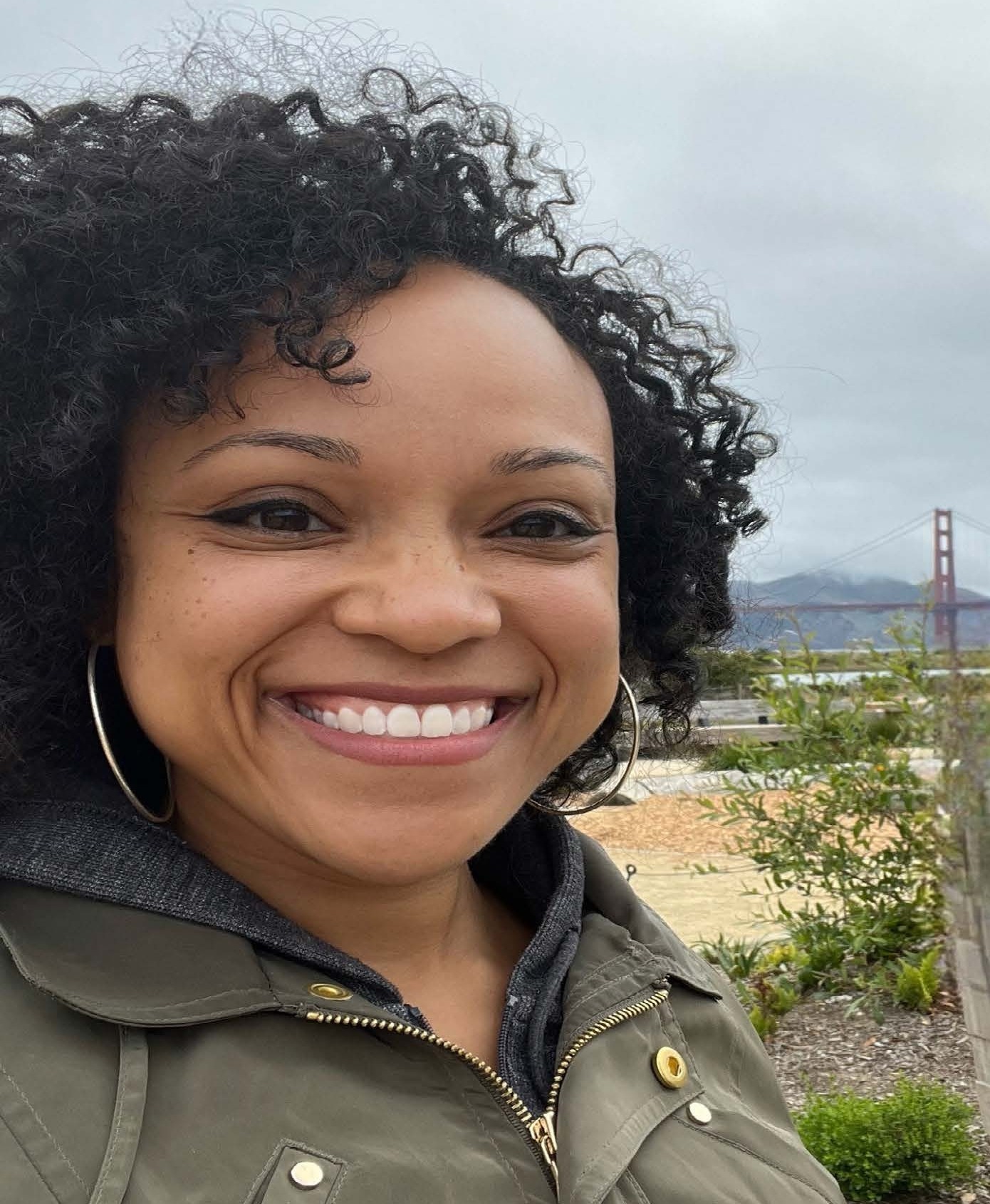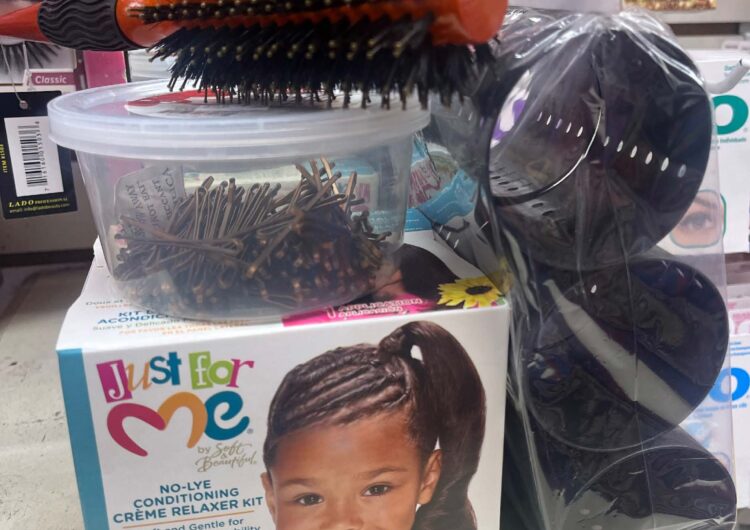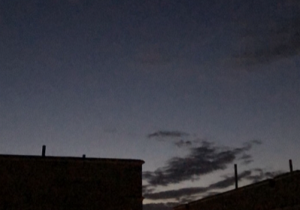My hair journey is an atypical one compared to most who share my culture, background, or hair type. Though I’ve faced the same all-too-common hair shaming from others because of my hair’s natural composition, that relentless campaign exclusively came from external sources. This is owed to such tactics being blessedly absent from my home life and family dynamic, which ultimately shaped my positive association with my crown.
In our household, the word “greña” was never a hurled obscenity. It was only ever used in jest as I was being playfully chastised and pursued by Mami through the rooms of the house (brush, cintas, crema, and gomitas in hand) for reconciliation of the knots and snags I’d allowed to form on my head. This half-hearted scolding inevitably had a singular conclusion: me sitting on a corner of Mami and Papi’s bed or on a chair, paying the price in the form of unavoidable tugs as a brush clashed with the anarchy of what I had willfully allowed to emanate from my scalp. It worked in my favor that I wasn’t predisposed to tender-headedness. And though I presented no resistance once I had finally been wrangled, this was a song and dance often repeated between Mami and me in my younger years. Nonetheless, I always marveled at her creativity and the transformation I beheld in the mirror once she’d completed her thankless task: trenzas resembling elongated exclamation points with colorful gomitas punctuating the ends; moñitos secured with pinchos and satiny cintas; a soga à la Princess Jasmine, undoubtedly sheer coincidence but immensely symbolic in my young mind considering her status as my favorite Disney princess. That particular style ran the full length of my pint-sized back and was accented by gomitas of a fixed color to match my outfit. Then there was her take on the milkmaid hairstyle: a twisted cordón on either side of my head, each held in place by a vibrant lazo and pulled taut to the opposite side, partially wreathing my dome like a garland. All were a result of Mami’s ingenuity, trusty tools, and nimble fingers. Looking back, her inventive wizardry was commendable, especially in light of the constant reproach she faced from extended family members and strangers alike for not allowing desrizado anywhere near my hair or that of my sisters.
Long before these contemporary glory days of embracing and reclaiming natural hair and “going natural,” my mom was a legit trailblazer, decades ahead of her time. Back then, wearing hair in its God-given state (unless naturally straight) was considered unsightly and unkempt, and those around us made sure to never let her (or us) forget it. Still, she never once faltered or relented when it came to the upkeep of my or my sisters’ hair devoid of chemicals, even in those times I actually recall begging her for desrizado. I coveted the silken strands of those I encountered outside our house, relentlessly advertised on those predatory (as I now know to rightfully call them) Just for Me relaxer kit commercials featuring bright-eyed girls my complexion and darker who were all smiles, looked like me, and could easily have been my kin. I yearned to effortlessly toss my hair from side to side and run my fingers through sleek softness cascading from my own scalp (which, like any Dominican girl at that time, I had already gotten many a taste of from trips to the salón), just as they did. The implicit irony of those commercials boasting of “no lye” (and thus falsely deemed “safer”) while shamelessly indoctrinating us with nothing less than toxic lies. Yet Mami stood firm, much to the chagrin of young me and the admiration of now-grown me.
I remember her always watching the woman designated to wash my hair at the salón like a hawk while simultaneously chatting with other clientas. She was on high alert, her mission clear: ensuring not a trace of alisado (that Dominican word-of-mouth version of Just for Me, deceptively regarded as “less harmful” to fledgling scalps sans catchy commercials and slogans) was slipped into the divine-smelling shampoo and conditioner elixir being applied. All this from a mujer who’d had desrizado applied to her own head while still in single digits, long before she knew or ever could make an informed decision for herself.
Aside from Mami, the other person in our household who most consistently colors my earliest memories of caring for my hair is actually my brother. Nine years my senior, he would brush and style my hair to assist in getting me ready for school while I sat at his feet, and he did so well into his teens. How he came to share in that particularly unconventional, doting responsibility is unbeknownst to me. What I do know is that he was endlessly gentle in his process and never once (at least not that I witnessed) protested. In this way, even at his young age, he was an unwitting pioneer in challenging traditional and cultural gender roles. For whatever reason, he in no way saw this as an affront or threat to his burgeoning masculinity. Little did he know he was a harbinger of countless social media accounts now devoted to and championing men of color actively caring for the hair of the young girls in their lives. While I can’t speak to how he would recount these memories if asked, I do know that years later it would be him and not their mother who would assume primary care of his daughters’ sprightly curls, apathetic as she was to familiarizing herself with a texture counter to her own lank, flaxen bob. It makes sense that his early training with my mane served as a precursor to his efficiency with theirs.
Though trips to the salón were most often made with Mami, I sometimes went with my eldest sister to her salón of choice (converted into countless establishments since, but currently boarded up and abandoned) next to the gas station on the corner of 155th and Broadway. Those excursions with my fashionista older sister were ones I looked forward to, in spite of the requisite two hours (my thicket of hair adamantly refusing to dry in less time) I was obliged to endure under the hooded secadora’s steady blast of heat. This was followed by the salonera pasándome blower, yanking any remaining undulations into submission with the round brush and searing blow dryer she expertly wielded in tandem. And though the tips of my ears were occasionally scalded in the process, I considered this nothing more than war wounds turned badges of honor towards a coveted end result. It was all well worth it to me back then for the perceived glam, ephemeral (considering there was only so much humidity, involuntary sweat, and moisture I could realistically avoid) transformation. And while they meant something entirely different to me then, I now know those experiences were actually speaking to the enduring versatility and resilience of my inherited tresses.
In high school (still years ahead of the current natural hair movement and its now vast resources), it was my other older sister who became my all-knowing guru in the maintenance and care of my curls. She was my one-stop shop for curly hair knowledge. It was through her that I learned the importance of microfiber towels, satin pillowcases, hair product ingredients, and co-washing. She was my personal fount of vital tips and tutorials, information she readily shared after scouring the nascent internet for the then-scant insight being imparted. She orchestrated my very first visit to a curly hair salon, a “boujee” establishment in SoHo (at the time, one of the first of its kind) that was the complete antithesis of every salón I’d ever set foot in my life. The experience was replete with announcing our scheduled arrival at a reception desk, checking in our coats, being offered chilled artesian water and peach-flavored iced tea in frosty champagne flutes while waiting to be called, and a spectacle of white women sporting coifs ranging from wavy to spiral. Not to mention the hefty price tag for the specialized hair services we subsequently received. It was by my sister’s example that I learned to truly embrace my hair as its exclusive custodian and, most importantly, that my tendrils were not just manageable but beautiful. These lessons took root and endured. Even so, it still took me years to show up to job interviews unafraid, without my hair slicked back in a bun or freshly blown out—that deeply embedded fear and societal falsehood of unprofessionalism so securely tacked onto natural hair, lingering.
These days, I often feel like I’m in an alternate reality with how drastically the mindset surrounding natural hair has shifted and how widely revered it’s become in both American and Dominican culture. It’s a shift that, if foretold all those years ago, would have surely been laughed into oblivion by any and everyone (including me) well-versed on the topic for its sheer implausibility. That whole generations now have the chance to grow up in the near absence (since, unfortunately, detractors in any situation will forever exist) of that once-common shame and humiliation is a true miracle, considering the deeply ingrained ideologies that openly persisted. I don’t know if it will ever feel quite “normal” to receive compliments about my curls from complete strangers, given the parallel universe I was born into. Nonetheless, it’s one of the very few instances of a “new normal” that speaks to actual progress, and even if never known to or acknowledged by others, the people who nurtured me helped lay its very foundation.
My hair journey has had an overwhelmingly positive trajectory, in spite of the best efforts of negative outside forces, both people and situations, to ensure otherwise. A defining trait that, to some, may seem inconsequential, hair in communities like mine carries a greater significance than can be readily understood from the outside looking in. It is inherently linked to identity and perceptions of worth. Each member of my nuclear family (aside from Papi, who hasn’t had much hair to speak of for most of my life) has had a hand in affirming my hair not merely as a part of me, but as a part of me to be celebrated. And I owe each of them thanks for instilling that sense of self-worth and ownership in me when they could have so easily succumbed to unabating external pressures. Without knowing, they continually demonstrated to me a fundamental truth: that legitimate value isn’t determined by outside endorsement.
 Amanda M. Ortiz is a NY-born-and-bred, first-generation Dominican writer. Pursuing degrees in international affairs and Latin American studies sparked a commitment to peacebuilding and remembrance initiatives in societies that have endured genocide (particularly Hispaniola) that has yet to diminish.
Amanda M. Ortiz is a NY-born-and-bred, first-generation Dominican writer. Pursuing degrees in international affairs and Latin American studies sparked a commitment to peacebuilding and remembrance initiatives in societies that have endured genocide (particularly Hispaniola) that has yet to diminish.
Her writing is a space of candid cultural, ancestral, and personal reflection, previously published by Dominican Writers Association. In addition to Spanish, she is fluent in Portuguese with a deep love for Brasil. Her writing, travels, book adventures, and editing pursuits are chronicled on Instagram: @amopalabras & Twitter: @amo_palabras.





